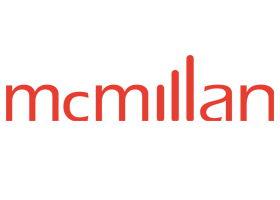


Dual Reporting and Investigation Requirements for British Columbia Employers
Dual Reporting and Investigation Requirements for British Columbia Employers
Background
The Workers Compensation Amendment Act, 2015 (“Bill 9”), received Royal Assent on May 14, 2015 and made a number of changes to the occupational health and safety part of the British Columbia Workers Compensation Act (the “Act”).[1] These changes include the requirement for an employer to undertake a preliminary investigation within 48 hours of certain incidents, and the requirement for an employer to submit a full investigation report to WorkSafeBC within 30 days of certain incidents, unless WorkSafeBC grants an extension.
On November 17, 2015, the Workers Compensation Amendment Act (No. 2), 2015, also known as Bill 35, received Royal Assent and introduced further changes that build on the changes made under Bill 9. These changes require employers to do the following:
- immediately report to WorkSafeBC all workplace fires or explosions that had the potential to cause serious injury to a worker;
- provide both preliminary and full employer incident investigation reports to the company’s joint occupational health and safety committee or worker representative, as applicable, or post these reports at the worksite; and
- specify what the participation of an employer and worker representative in the employer’s investigation of a work-related incident may include.
As a result of these recent changes, employers falling within the ambit of the Act should be aware of these policies and requirements for accident reporting and investigation.
The following are some of the key requirements of WorkSafeBC’s new policies respecting preliminary and full incident investigations and reports.
Accident Reporting and Investigation Requirements
The employer must immediately notify the Workers’ Compensation Board (the “Board”) of the occurrence of any accident that:[2]
- resulted in serious injury or the death of a worker;
- involved a major structural failure or collapse of a building, bridge, tower, crane, hoist, temporary construction support system or excavation;
- involved the major release of a hazardous substance;
- involved a fire or explosion that had a potential for causing serious injury to a worker, or
- was an incident required by regulation to be reported.
When these incidents occur, an employer must conduct a preliminary and a full incident investigation.[3] Importantly, employers are required to conduct these investigations even when incidents did not cause injury but had a potential for causing serious injury to a worker.[4]
With respect to asbestos, employers must conduct these investigations when the following occurs:
- an individual encounters asbestos unexpectedly;
- an air sample indicates high asbestos levels in a clean room or outside area; and
- an individual sustains an exposure that has the potential to cause serious injury or death.
Preliminary and full incident investigations must be carried out by persons knowledgeable about the type of work involved and, if reasonably available, the employer or an employer representative, and a worker representative.[5]
Preliminary Incident Investigation
Following an incident identified in section 173 of the Act, which includes those incidents described above, the employer must immediately undertake a preliminary investigation to identify unsafe conditions, acts or procedures which significantly contributed to the incident. The employer is also required to determine interim corrective action to ensure work can be continued safely during the interim period between the incident and the conclusion of a full investigation.[6]
A report of the preliminary investigation must be completed within 48 hours of the occurrence of the incident. This report must be provided to the Board upon request, and to the joint committee or worker health and safety representative where applicable, or otherwise posted at the workplace. Reports must include a statement of the sequence of events that preceded the incident and a brief description of the incident.[7]
If the employer takes corrective action, as soon as practicable, a report of the action taken must be provided or posted in the aforementioned way, and a copy of the report may be requested by the Board.
Full Incident Investigation
Immediately after completing a preliminary investigation, the employer is required to conduct a full incident investigation to determine
- the cause or causes of the incident;
- any unsafe conditions, acts or procedures that significantly contributed to the incident; and
- the corrective action necessary to prevent the recurrence of similar incidents.[8]
A report of the full investigation must be submitted to the Board within 30 days of the occurrence of the incident, and provided to the joint committee or worker health and safety representative where applicable, or otherwise posted at the workplace. In limited circumstances, usually when delays are outside of the employer’s control, the Board may extend the time period for submitting the report. Reports must include a determination of the cause or causes of the incident and a full description of the incident.[9]
A corrective action report must also be provided or posted in the aforementioned way as soon as practicable, and a copy of the report may be requested by the Board. If the employer completes the full incident investigation within 48 hours of the occurrence of the incident, the employer must only provide or post one corrective action report for both the preliminary and full incident investigation.
by Louis Zivot and Natalie Cuthill, Student-at-Law
[1] Workers’ Compensation Act, RSBC 1996, c. 492 at Part 3, Division 10 [Act].
A Cautionary Note
The foregoing provides only an overview and does not constitute legal advice. Readers are cautioned against making any decisions based on this material alone. Rather, specific legal advice should be obtained.
© McMillan LLP 2016
Insights (5 Posts)View More
More Than Meets the Eye: The Legal Implications of British Columbia’s Agreement to Recognize Aboriginal Title Over Haida Gwaii
An analysis of legal implications related to the BC Government's agreement with the Haida Nation to recognize Aboriginal title over Haida Gwaii.
Lessons Learned from the TTC’s Ransomware Attack
Lessons learned from the recent investigation by the Ontario IPC into the effectiveness of the TTC's cybersecurity measures and ransomware attack response
Don’t Get Caught by Canada’s Patent Novelty Grace-Period
The key difference between Canada and other jurisdictions like the United States when relying on the grace-period for inventor disclosures.
Shifting Gears – Canada to Consider New Motor Vehicle Equipment Regulations to Help Prevent Auto Theft
Transport Canada announces plan to update safety standards to combat auto theft.
Budget 2024: Legislative Changes of Note for Investment Funds
In Budget 2024, the Government acknowledges that the restrictions placed on the property that may be held by registered plans have become unduly complex.
Get updates delivered right to your inbox. You can unsubscribe at any time.






